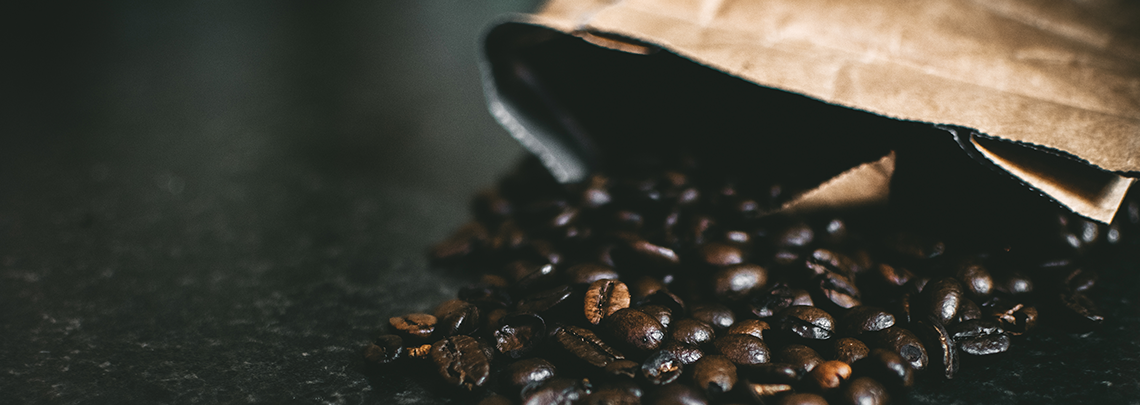Coffee Then Beer Then Coffee Again

The History of Coffee
No one knows exactly how or when java was discovered, though there are many legends about its origin.
An Ethiopian Legend
 Coffee grown worldwide can trace its heritage dorsum centuries to the aboriginal coffee forests on the Ethiopian plateau. There, legend says the goat herder Kaldi first discovered the potential of these dearest beans.
Coffee grown worldwide can trace its heritage dorsum centuries to the aboriginal coffee forests on the Ethiopian plateau. There, legend says the goat herder Kaldi first discovered the potential of these dearest beans.
The story goes that that Kaldi discovered coffee after he noticed that after eating the berries from a certain tree, his goats became so energetic that they did not desire to sleep at night.
Kaldi reported his findings to the abbot of the local monastery, who made a drink with the berries and found that it kept him warning through the long hours of evening prayer. The abbot shared his discovery with the other monks at the monastery, and knowledge of the energizing berries began to spread.
Every bit word moved e and coffee reached the Arabian peninsula, it began a journey which would bring these beans across the world.
The Arabian Peninsula
Java tillage and trade began on the Arabian Peninsula. By the 15th century, java was existence grown in the Yemeni commune of Arabia and by the 16th century it was known in Persia, Egypt, Syria, and Turkey.
Coffee was not just enjoyed in homes, only also in the many public coffee houses — chosen qahveh khaneh — which began to announced in cities beyond the Virtually East. The popularity of the coffee houses was unequaled and people frequented them for all kinds of social activeness.
Not but did the patrons beverage coffee and engage in conversation, but they besides listened to music, watched performers, played chess and kept current on the news. Java houses quickly became such an important center for the exchange of data that they were oftentimes referred to as "Schools of the Wise."
With thousands of pilgrims visiting the holy metropolis of Mecca each year from all over the world, cognition of this "vino of Araby" began to spread.
Coffee Comes to Europe
European travelers to the About E brought back stories of an unusual dark black beverage. By the 17th century, coffee had made its style to Europe and was becoming pop across the continent.
Some people reacted to this new beverage with suspicion or fear, calling information technology the "bitter invention of Satan." The local clergy condemned java when it came to Venice in 1615. The controversy was so great that Pope Cloudless Eight was asked to intervene. He decided to taste the potable for himself earlier making a decision, and found the drinkable so satisfying that he gave it papal blessing.
Despite such controversy, coffee houses were quickly condign centers of social activity and communication in the major cities of England, Austria, France, Federal republic of germany and Holland. In England "penny universities" sprang upwards, so called because for the price of a penny one could buy a loving cup of coffee and appoint in stimulating conversation.
Coffee began to supplant the common breakfast potable beverages of the time — beer and wine. Those who drank coffee instead of alcohol began the 24-hour interval alarm and energized, and not surprisingly, the quality of their piece of work was greatly improved. (We like to call back of this a precursor to the modern office coffee service.)
By the mid-17th century, in that location were over 300 coffee houses in London, many of which attracted like-minded patrons, including merchants, shippers, brokers and artists.
Many businesses grew out of these specialized coffee houses. Lloyd'south of London, for instance, came into existence at the Edward Lloyd'due south Coffee Business firm.
The New World
In the mid-1600's, coffee was brought to New Amsterdam, later chosen New York by the British.
Though coffee houses rapidly began to appear, tea continued to be the favored drink in the New Globe until 1773, when the colonists revolted against a heavy taxation on tea imposed by King George III. The revolt, known every bit the Boston Tea Political party, would forever modify the American drinking preference to coffee.
"Coffee - the favorite beverage of the civilized world." - Thomas Jefferson
Plantations Effectually the World
Equally demand for the potable continued to spread, there was trigger-happy competition to cultivate coffee outside of Arabia.
The Dutch finally got seedlings in the latter half of the 17th century. Their first attempts to plant them in Republic of india failed, simply they were successful with their efforts in Batavia, on the island of Coffee in what is now Republic of indonesia.
The plants thrived and shortly the Dutch had a productive and growing trade in java. They and so expanded the cultivation of java trees to the islands of Sumatra and Celebes.
Coming to the Americas
In 1714, the Mayor of Amsterdam presented a gift of a young coffee plant to King Louis XIV of France. The Rex ordered it to be planted in the Royal Botanical Garden in Paris. In 1723, a young naval officeholder, Gabriel de Clieu obtained a seedling from the Rex'south institute. Despite a challenging voyage — complete with horrendous weather, a saboteur who tried to destroy the bulb, and a pirate attack — he managed to transport it safely to Martinique.
Once planted, the seedling not simply thrived, but it'southward credited with the spread of over 18 meg coffee trees on the island of Martinique in the side by side 50 years. Fifty-fifty more incredible is that this seedling was the parent of all coffee trees throughout the Caribbean, S and Central America.
The famed Brazilian java owes its existence to Francisco de Mello Palheta, who was sent by the emperor to French Guiana to get java seedlings. The French were not willing to share, just the French Governor's wife, captivated by his adept looks, gave him a large bouquet of flowers before he left— buried within were enough coffee seeds to brainstorm what is today a billion-dollar industry.
Missionaries and travelers, traders and colonists connected to conduct coffee seeds to new lands, and coffee trees were planted worldwide. Plantations were established in magnificent tropical forests and on rugged mountain highlands. Some crops flourished, while others were short-lived. New nations were established on coffee economies. Fortunes were made and lost. By the end of the 18th century, coffee had become one of the world's most profitable consign crops. Afterward crude oil, coffee is the most sought commodity in the earth.
Source: https://www.ncausa.org/about-coffee/history-of-coffee
0 Response to "Coffee Then Beer Then Coffee Again"
Enregistrer un commentaire